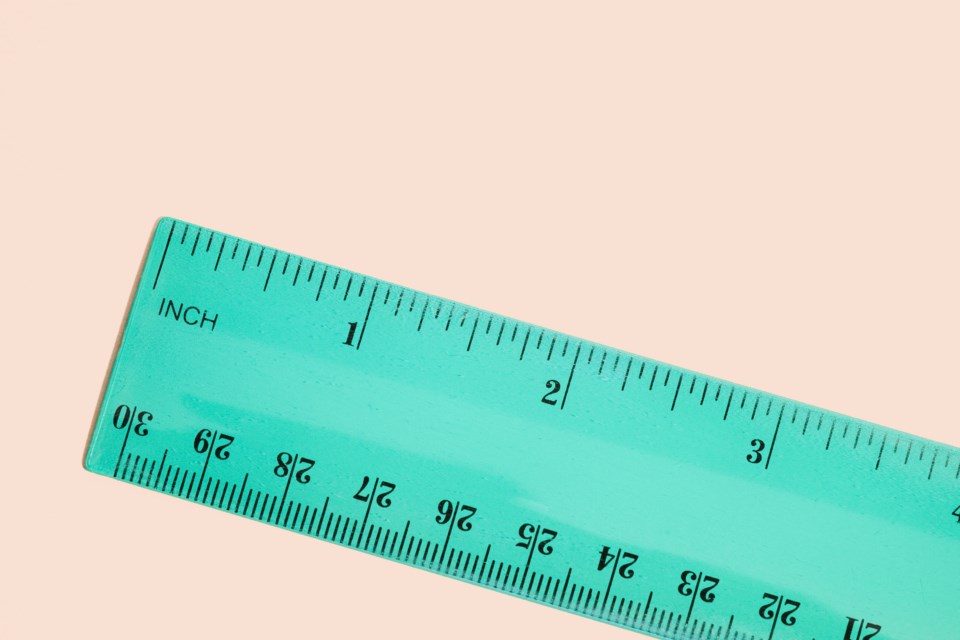The 1970s were a time of change in Canada, not just politically and sociologically but also in the way we measured things.
The process of metrification took more than a decade and ultimately saw Canadians abandoning the imperial measurement system and embracing the international metric system.
Metrification had its challenges from the start. Not all Canadians were thrilled with the notion of having to convert from miles to kilometres. There was even a peculiar protest by Progressive Conservative members of Parliament, who established a “freedom to measure” gas station in Ontario that sold gas in imperial gallons.
Research Co. and Glacier Media asked Canadians about the way they measure things in their daily lives and found a significant proportion of the country’s residents who continue to look to the Empire before figuring out how to operate an oven or how fast to drive a vehicle.
Across the country, 74 per cent of Canadians say they measure a person’s weight in pounds, while only 24 per cent rely on kilograms. No region of the country focuses primarily on the international metric system for this endeavour. The popularity of pounds is indisputable, from a high of 91 per cent in Atlantic Canada to a low of 72 per cent in Alberta.
More than four in five Canadians (84 per cent) use litres to measure liquid in a container, while only 16 per cent prefer to focus on quarts and gallons. There is a significant age gap on this issue. While the proportion of Canadians aged 18 to 34 and aged 35 to 54 who think of quarts and gallons is negligible (nine per cent and seven per cent, respectively), the numbers jump to 32 per cent among those aged 55 and over.
When it comes to heat, the country appears to be fond of both systems in different moments. We see that 77 per cent of Canadians measure the temperature outside their home in degrees Celsius. Again, Canadians aged 55 and over are more likely to look at degrees Fahrenheit (30 per cent, compared to the Canadian average of 23 per cent).
One could assume that Canadians would maintain their fondness for Celsius when cooking, but the numbers flip. Only 41 per cent of Canadians measure the temperature of their oven in Celsius, while a majority (59 per cent) rely on Fahrenheit – the same unit that is not abandoned for weather.
Among Canadians aged 55 and over, reliance on Fahrenheit for cooking food reaches 68 per cent. Canadians aged 18 to 34, who have lived their entire lives after metrification was completed in 1985, are divided: 53 per cent look at Fahrenheit before placing food in an oven, while 47 per cent prefer Celsius.
One of the key components of metrification was, as the name clearly states, metres. Few Canadians have embraced it. Only one in five of us (20 per cent) measure a person’s height in metres and centimetres, while a huge majority (80 per cent) look at feet and inches.
When measuring speeds and distances, Canadians are more likely to steer clear of the Empire. More than four in five (82 per cent) measure a vehicle’s speed in kilometres per hour and practically three in four (74 per cent) rely on kilometres when figuring out the distance between two places. As expected, Canadians aged 55 and over are more likely to resist the international metric system in each of these two matters: 26 per cent still measure speed in miles per hour and 40 per cent measure distance in miles.
When Canadians are asked about going back to the imperial measurement system, a majority (56 per cent) think this is something that should not be considered, while about three in 10 (29 per cent) would welcome the change.
Majorities of Canadians across all three age groups believe this is not the time to abandon the international metric system, but views are more nuanced regionally. Ontario leads the way in resistance to change (62 per cent), followed by British Columbia (58 per cent), Alberta (57) and Manitoba and Saskatchewan (55 per cent). The proportions are lower in Atlantic Canada (50 per cent) and Quebec (48 per cent).
On the political front, there is no extreme desire from the governing party or the Opposition to go back to feet and inches. Majorities of Canadians who voted for the Liberal Party of Canada (56 per cent), the Conservative Party of Canada (55 per cent) and the New Democratic Party (NDP) (54 per cent) in last year’s federal election are not ready to abandon the international metric system.
Decades after metrification was completed, few Canadians believe the country should go back to imperial measurements. Still, as outlined by the variety of responses when we ask about daily activities, people are doing what they think is best, regardless of its official status. Many of the oldest Canadians continue to think about miles, feet and gallons, even if this baffles their younger counterparts.
Mario Canseco is president of Research Co.
Results are based on an online study conducted from August 1 to August 3, 2022, among 1,000 adults in Canada. The data has been statistically weighted according to Canadian census figures for age, gender and region. The margin of error, which measures sample variability, is plus or minus 3.1 percentage points, 19 times out of 20.




